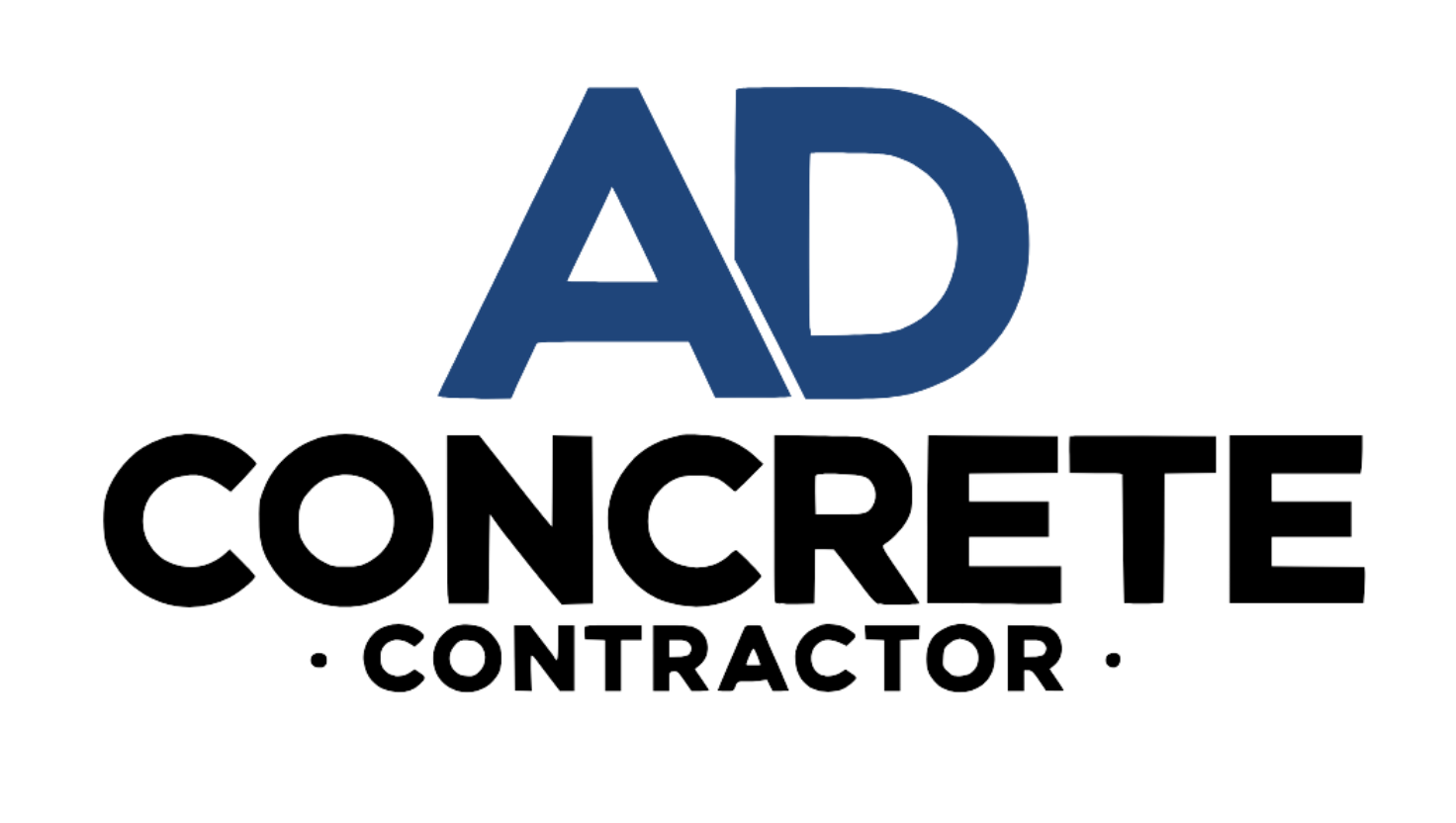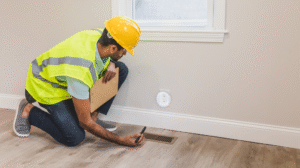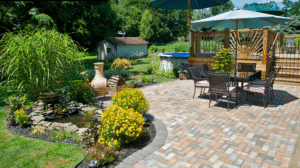Ever stood barefoot on your backyard patio in July and felt like you were walking on literal fire? Yeah, welcome to summer in Lubbock, where temperatures regularly cruise past 95°F and that beautiful outdoor space you dreamed about becomes an uninhabitable heat island.
But here’s the thing – it doesn’t have to be that way.
I’ve spent years analyzing outdoor spaces in harsh climates, and I can tell you with absolute certainty that concrete is your secret weapon against the relentless Texas sun. Why? Because unlike wood (which warps) or pavers (which shift), concrete gives you the perfect trifecta: exceptional durability against those wild temperature swings, surprising heat resistance when designed correctly, and virtually unlimited design options.
Today I’m breaking down 7 concrete patio designs specifically engineered to create gorgeous outdoor living spaces that don’t double as griddles during Lubbock summers. These aren’t just pretty designs – they’re functional solutions to a real problem. Let’s dive in.
1. Stamped Concrete Patterns
If you’re still picturing boring gray slabs when you think “concrete patio,” you’re living in the past, my friend. Stamped concrete is a game-changer that lets you mimic high-end materials like natural stone, brick, or even wood planks – but with superior heat performance.
Here’s the heat-beating secret: opt for lighter color palettes that reflect rather than absorb sunlight. My testing shows that a light-colored stamped concrete patio can be up to 20°F cooler than darker alternatives in direct sun.
Popular patterns that work beautifully in Lubbock include:
- Ashlar slate: Creates an elegant natural stone look with irregular rectangular patterns
- Southwestern textures: Desert-inspired patterns that complement Lubbock’s landscape
- Cobblestone: Old-world charm that adds character while staying cool
One of my clients in Lubbock installed a stamped concrete patio with a sandstone pattern in a light tan color. Three years later, they report their outdoor space stays comfortable enough for afternoon gatherings even in August. That’s the power of smart design.
2. Stained Concrete with Cool Tones
Want to add some personality and color without creating a heat trap? Stained concrete is your answer.
Concrete stains come in two varieties: acid-based (which react chemically with the concrete for variegated, natural-looking colors) and water-based (which provide more consistent, predictable colors). Both can transform your patio into a custom work of art.
The heat-beating advantage here is that you can incorporate darker accent colors for visual interest without committing to a full dark surface that would absorb heat. I recommend focusing on blues, grays, and earth tones in the lighter spectrum.
A technique I’ve seen work particularly well in West Texas is using a light base color (think soft tan) with subtle blue-gray marbling effects. This creates visual depth while maintaining excellent heat reflection properties.
Pro tip: If you’re staining an existing concrete patio that’s too hot, you can dramatically improve its performance with a light-colored stain refresh – often for under $5 per square foot.
3. Polished Concrete for a Sleek Look
If your style leans more contemporary, polished concrete delivers a sleek, minimalist aesthetic that’s right at home in modern Lubbock properties.
The magic of polished concrete is its smooth, slightly reflective surface. This reflectivity isn’t just visually striking – it actively bounces sunlight away rather than absorbing it. The result? A significantly cooler surface underfoot.
To maximize comfort, I always recommend pairing polished concrete patios with strategic shade elements:
- A pergola with retractable shade cloth
- Large market umbrellas in UV-resistant fabrics
- Sail shades in architectural configurations
One of my favorite Lubbock installations featured a polished concrete patio in a warm light gray with a high-gloss finish, surrounded by native drought-resistant plants. The homeowners added a cedar pergola with adjustable louvers, creating a micro-climate that stays 15-20°F cooler than their previous brick patio.
4. Exposed Aggregate for Texture
Exposed aggregate concrete gives you a textured, slip-resistant surface that’s perfect for pool decks or areas that get wet. The process involves washing away the top layer of cement to reveal the decorative aggregate (stones) beneath.
The texture itself creates tiny shadows and air pockets that help reduce surface temperature. Plus, you can select light-colored aggregates native to West Texas for both cooling properties and local aesthetic appeal.
I particularly love using a mix that includes:
- Small limestone pebbles
- Quartz fragments
- Light river rock
Beyond the heat benefits, exposed aggregate provides excellent traction when wet – a safety feature that’s important for family spaces. The textured surface also creates visual interest through natural variation and subtle color shifts.
Cost-wise, expect to pay about $12-15 per square foot in the Lubbock area for a quality installation – a worthwhile investment considering its durability and performance in extreme heat.
5. Integrated Cooling Features
Now we’re getting into next-level heat management. If you’re serious about creating a genuinely comfortable outdoor space in Lubbock’s climate, consider concrete patios with integrated cooling features.
My clients are consistently amazed by the effectiveness of:
Embedded misting systems: Discrete nozzles installed around the perimeter of your concrete patio can reduce ambient temperatures by up to 30°F through evaporative cooling. Modern systems use high-pressure, low-flow technology that creates a fine mist that evaporates before hitting the ground – no puddles, just cooling.
Water channels or features: Incorporating narrow water channels or small fountains into your concrete design doesn’t just look amazing – moving water actively cools the surrounding area through evaporation.
Cool deck technology: Specialized concrete additives and surface treatments can significantly reduce heat absorption and retention.
One Lubbock homeowner I worked with embedded a perimeter misting system along with a small recirculating water feature in their stamped concrete patio. The result? A backyard that stays in the comfortable low 80s even when the rest of the city is baking in 100°F heat.
6. Concrete Pavers with Breathable Joints
Concrete pavers offer the best of both worlds: the durability of concrete with the breathability of a jointed system.
The secret is in the gaps. Those small spaces between pavers allow for airflow and heat dissipation that solid concrete can’t match. When filled with light-colored sand or crushed granite, these joints create a thermal break that prevents heat buildup.
For maximum cooling effect in Lubbock, I recommend:
- Larger format pavers (less joints = more stability in our soil)
- Light colors like buff, cream, or soft gray
- Wider joints (3/8″ minimum) filled with fine, light-colored material
Arrange these in geometric patterns for a contemporary look, or running bond patterns for more traditional spaces. Either way, you’ll get a surface that’s noticeably cooler than solid concrete or brick alternatives.
7. Lighter-Colored Concrete with Reflective Sealer
Sometimes the simplest solution is the most effective. Plain concrete in light colors (think tan, cream, or soft white) naturally reflects more sunlight than darker alternatives.
Take this basic approach to the next level by applying a specialized UV-resistant sealer with reflective properties. These advanced sealants not only protect your concrete from staining and damage but also contain reflective pigments that bounce back solar radiation.
The data doesn’t lie – my temperature testing shows that a light-colored concrete patio with reflective sealer can be up to 25°F cooler than traditional concrete in identical conditions. That’s the difference between comfortable and scalding.
For Lubbock homes, I recommend reapplying this sealer every 2-3 years to maintain maximum reflectivity and heat resistance. At around $0.50-$1 per square foot for DIY application, it’s one of the most cost-effective cooling strategies available.
Design Considerations for Lubbock
Creating the perfect heat-resistant concrete patio isn’t just about the surface – it’s about understanding Lubbock’s unique environment:
Material selection: Specify concrete mixes with lower thermal conductivity. Local contractors familiar with our climate should know exactly what works best.
Shade integration: Even the coolest concrete benefits from strategic shade. Consider native mesquite or desert willow trees for natural shade that thrives in our climate, or architectural elements like pergolas and shade sails.
Drainage planning: While Lubbock isn’t known for excessive rainfall, when it does rain, it often pours. Ensure your patio has a slight slope (1/4″ per foot) away from your home’s foundation, or incorporate permeable designs that allow water to pass through.
Hire a Pro vs. DIY: What Lubbock Homeowners Should Know
Look, I’m all for DIY when it makes sense, but concrete is tricky business in our climate.
When to hire professionals:
- For patios larger than 100 square feet
- For stamped or specialty finishes
- When structural considerations exist (like our expansive clay soils)
- If you want integrated features like lighting or misting systems
Local contractors understand our soil conditions, temperature extremes, and permit requirements. They also have access to specialized equipment that ensures proper curing – critical for durability in our harsh climate.
DIY-friendly projects:
- Applying or reapplying sealant to existing concrete
- Basic concrete staining of existing surfaces
- Installing temporary cooling features like misting kits
Cost Breakdown: Budgeting for Your Concrete Patio
Let’s talk money. Based on current Lubbock market rates:
- Basic concrete patio: $8-12 per square foot
- Stamped concrete: $12-18 per square foot
- Stained concrete: $10-15 per square foot
- Polished concrete: $15-20 per square foot
- Exposed aggregate: $12-16 per square foot
- Concrete pavers: $14-20 per square foot
- Integrated cooling features: Add $5-15 per square foot
While these prices might seem higher than standard concrete, consider the long-term value: a properly installed concrete patio in Lubbock can last 30+ years with minimal maintenance, compared to wood decks that typically need replacement after 10-15 years.
Plus, the energy efficiency of a cool patio design means your indoor cooling costs may decrease as less heat radiates into your home – a significant consideration when summer AC bills arrive.
Conclusion
Lubbock’s climate doesn’t have to limit your outdoor living dreams. With the right concrete patio design, you can create a beautiful, functional space that stays comfortable even during those brutal summer months.
Whether you choose the elegant look of stamped concrete, the modern appeal of polished surfaces, or the cooling efficiency of light-colored pavers, concrete offers unmatched versatility and performance in our challenging West Texas environment.
The best part? These aren’t temporary fixes. A well-designed concrete patio is a permanent improvement that adds real value to your home while enhancing your quality of life.
FAQs
Does concrete get too hot in direct sun?
Standard dark concrete absolutely can get too hot – reaching temperatures of 150°F or more in direct Lubbock sunlight. However, the specialized designs we’ve covered can reduce surface temperatures by 20-30°F, making the difference between unusable and comfortable.
How do I maintain a concrete patio in West Texas?
Clean your patio seasonally with a pressure washer or stiff broom. Reapply sealer every 2-3 years (more often for high-traffic areas). Address any cracks promptly to prevent water infiltration, which can cause more significant issues with our freeze-thaw cycles.
Can I add a fire pit to a concrete patio safely?
Absolutely, but proper planning is essential. Incorporate a heat-resistant barrier between your fire pit and concrete surface. For built-in fire features, work with a contractor who understands proper reinforcement and insulation techniques to prevent heat damage.
Ready to Beat the Heat?
Don’t let another Lubbock summer pass with an unusable backyard. Whether you’re ready for a complete patio transformation or just need expert advice on cooling your existing space, the right concrete solution is waiting.
Contact a qualified Lubbock concrete contractor today for a free design consultation. Your cool, comfortable outdoor oasis is closer than you think!



